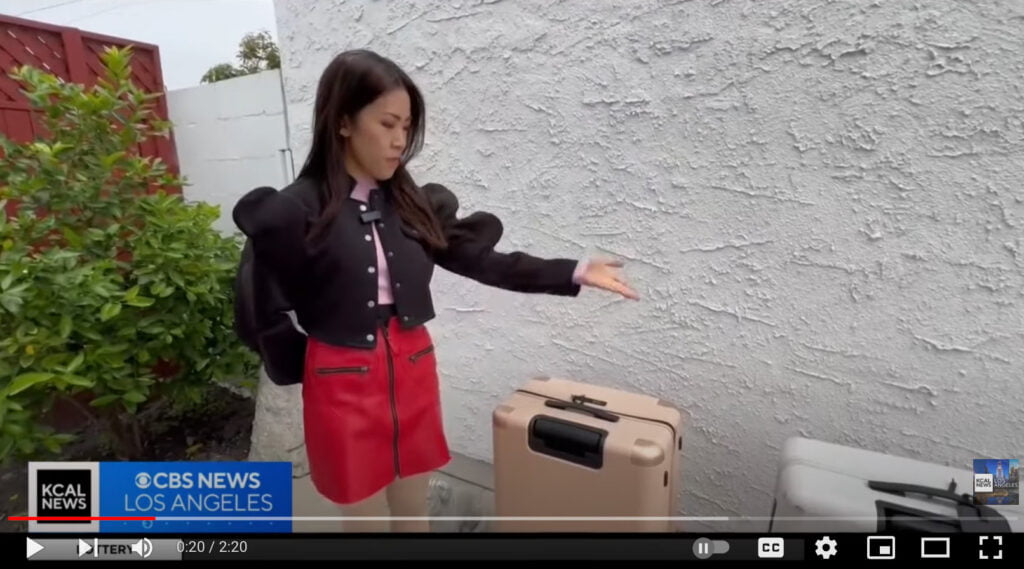If you are an international student studying abroad in another country, chances are you spent your first year adjusting to the culture and lifestyle in your new country. When your life finally gets back on track, some of you may be itching to go somewhere else again. After all, your new friends who are studying in their own country all seem to be taking a semester to study abroad. When I was an undergraduate student in the U.S., I was envious of my American classmates who flew off to Europe for their semester abroad. Being an international student in the U.S., I was technically already studying abroad. My inner travel bug didn’t seem to make any sense – how was I supposed to temporarily leave the country where I am a foreigner and come back again to continue my college career? In my head, there were too many logistical and visa-related issues to make it possible to study in a third country while studying abroad.
In my junior year, I found out that I could not have been more wrong. I missed out big time on the opportunity to study in a third country while taking advantage of my full scholarship from the U.S. college I was attending! The biggest mistake I made was not asking questions because I assumed it wasn’t possible. While the official scholarship rules didn’t mention anything related to study abroad options, a few of my classmates reached out to the scholarship committee and got the permission to use the benefit to pay for their study abroad expenses in full! When I learned about this, I was beating head against the wall. Earlier that summer, I applied for a summer exchange program in a third country and paid for it in full with my money without realizing I could’ve saved it. While I did technically get to study in a third country for a summer, I regretted deeply not doing my research and utilizing my hard-earned scholarship.
If you are contemplating the possibility of studying abroad again in a third country, know that it may very well be possible. You just have to speak to your school, do plenty of research, and make logistical arrangements far in advance.
Take Advantage of Your Home School’s Scholarships
If you already have any kind of scholarship from your home school, ask your school if they are willing to extend the benefits to study abroad programs. Sometimes all it takes is you asking a question! Don’t repeat the mistake I made by assuming they won’t allow it. Of course, you could be turned down by there is no harm in asking. Your scholarship will still be there for you in your home school as long as you maintain the required GPA.
If your existing scholarship doesn’t provide benefits for study abroad or you don’t have any kind of scholarships to begin with, ask your advisor if there is any other scholarships you can apply to. You may have missed some scholarships when you first enrolled or weren’t qualified for them back then, but now there may be more options. Of course, if your parents are happy to support you financially, you can skip this step entirely.
Apply for Scholarships from the Destination School
Your home school is not the only place to look for funding. A lot of universities in the world provide scholarships to international students on exchange or study abroad programs. Reach out to your destination school and ask if they provide any type of scholarships either before enrollment or after you finishes your program with outstanding GPAs. In my case, I was surprised to learn that I received a scholarship after I completed the summer program in the third country. It wasn’t announced to us before we enrolled but I received it a month after I departed the country simply because I completed all of my classes with high GPAs.
Find Out Visa Requirements
For international students, one of the biggest challenges is visa-related issues. It was already the case the first time you applied to study abroad from your home country, not to mention this is the second time and you are heading to a third country. There are two parts to this research: 1) What are the requirements to maintain your immigration status in your primary study abroad country? 2) What are the visa requirements for you to study in the third country?
In the case of the United States, if you are studying on an F1 student visa, you have two options. The first one is to enroll and receive necessary number of credits, while you study abroad in the third country, for a full course load of a semester required by SEVIS-certified schools. If you wish to travel more and not complete a full course load, the second option is to do the study abroad program while your school is on breaks, i.e. summer or winter breaks. The U.S. Department of Homeland Security actually has a great article summarizing your options. Always check in with your school’s international office first to make sure your arrangement meets the requirement to maintain your status. If you leave the U.S. for more than five months without maintaining a full course load, you will lose your F1 status and need to obtain readmission and reapply for a visa.
If you are on a J1 exchange scholar visa or any other visas, make sure to check in with your school and the latest updates from DHS or USCIS for respective requirements. When in doubt, consult an immigration attorney.
Your school’s study abroad or international office may also be able to guide you through visa requirements at the third country. You can also contact the destination school and ask for their assistance.
Make Sure You Can Transfer Credits Back
This may be a no brainer, but you’d be surprised how many students have encountered problems while transferring credits from study abroad programs. Some changed their minds during the semester, dropped a course they originally registered and enrolled in another one without consulting with advisors from either school. While this may not cause problems for you at the destination school, you will have trouble transferring the credits back to your home school once you finished the program. As a result, it may delay your graduation and cause you additional tuition to sign up for required classes back at your home school.
Get Storage Units for Your Belongings or Rent Out Your Apartment
After you take care of business at school and figure out your visa requirements, it is time to make living arrangements for your primary residence at your home school and temporary residence at your destination school. At your primary residence, you have the option to either find someone to rent your apartment for the duration that you’re gone or terminate your lease and get storage units for your belongings. For someone who is uncomfortable letting other people use their furniture, storage units may be a better option. You can expect to pay a couple of hundred dollars for a storage unit (exact price depends on your location and unit size), which is often less than rent. This makes it an attractive option for someone who is looking to minimize spending while they are gone.
Make Transitional Living Arrangements
The last step is to figure out where you are going to live while studying in the destination school. This is similar to how you found living arrangements at your home school, only that this time it’s more transitional. You can consider student housing, long-stay hostels, Airbnb rentals, host families or off-campus rental apartments. Your destination school most likely will have resources to help you secure temporary housing.




